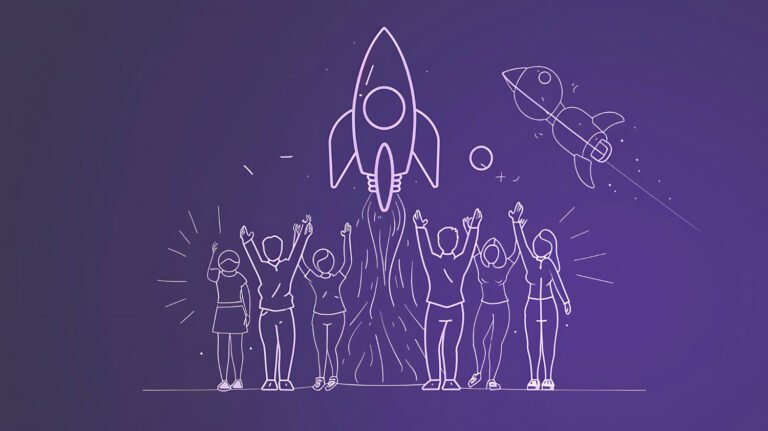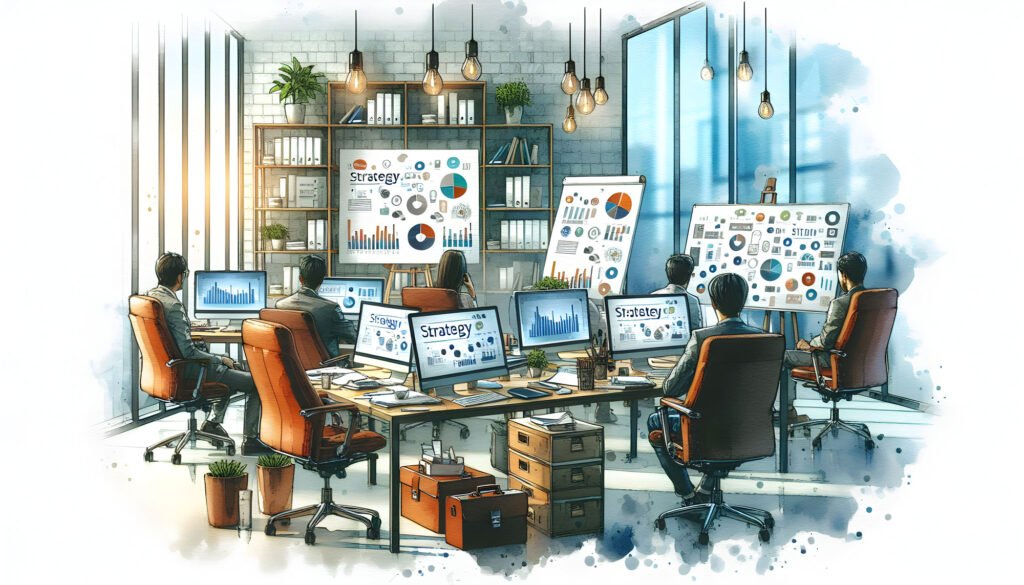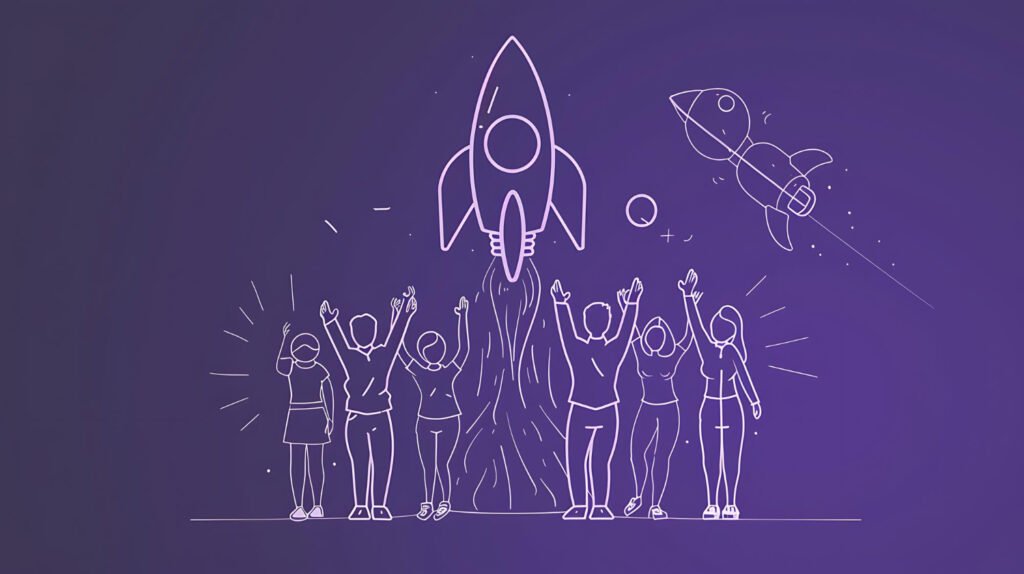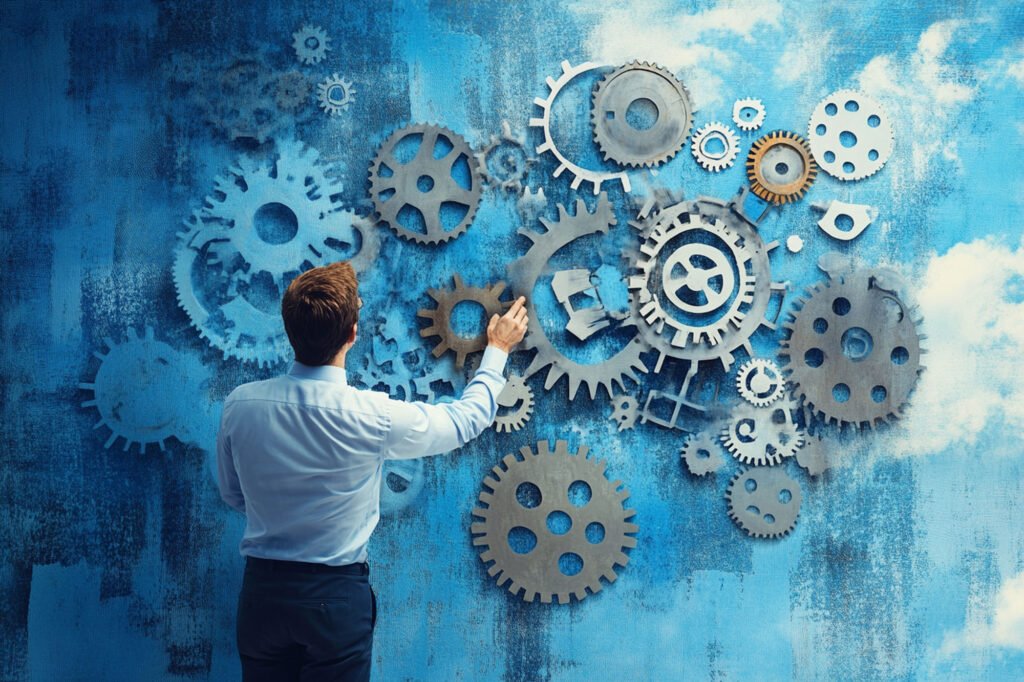
Team leaders and managers face new challenges in modern workplace communication. Teams achieve better results when AI creates personalised messages that strike a chord with each member. Smart communication tools help teams work better together and report higher satisfaction levels across departments.
AI chatbots and virtual assistants have changed team interactions through personalised strategies. These AI tools analyse how teams communicate and adjust message delivery with custom recommendations that improve connections. This piece shows practical ways AI solutions can help boost your team’s communication effectiveness.
Artificial intelligence transforms the way teams connect and cooperate in modern digital workplaces. Organisations experience a fundamental change in their team participation and interaction through AI integration in workplace communication.
AI reshapes how teams communicate by adding smart personalization features. Smart algorithms and machine learning now understand and adapt to each person’s communication style and patterns 1. AI chatbots and virtual assistants showcase this change as they handle complex conversations and give responses that sound more human with each interaction 1.
The key changes in team messaging show significant progress:
| Traditional Approach | AI-Enhanced Approach |
|---|---|
| Generic mass communications | Individual-specific messages |
| Fixed response times | Up-to-the-minute adaptive interactions |
| One-size-fits-all content | Context-aware messaging |
| Manual message scheduling | Smart timing optimisation |
AI-driven personalization makes team communication significantly better. Recent studies reveal that 71% of individuals now expect personalised interactions 2. This shows why customised communication matters more than ever. Here’s what makes it valuable:
AI technology helps teams tackle common communication barriers effectively. AI can analyse employee data and behaviour to recommend better ways for teams to communicate 3. Teams can overcome traditional challenges with immediate insights and suggestions.
Research shows that 76% of employees feel frustrated without individual-specific experiences 2. AI-powered solutions help organisations fix this problem. AI studies communication patterns to spot team members who might feel isolated and notifies leaders to step in 3.
AI-powered tools make information sharing smoother between departments and break down silos 4. Teams can create innovative solutions as they bring different expertise together more efficiently 4.
AI becomes especially valuable to hybrid and remote workers who need to feel more connected to their teams 3. AI studies how people communicate and what they prefer to suggest the best times and ways for team interactions. Team members stay involved whatever their location.
Organisations now understand their employees’ needs better than the traditional surveys and feedback forms allowed. Modern AI-powered tools help companies learn about their teams’ dynamics and priorities effectively.
People analytics today combines three significant aspects that give detailed team insights:
| Analytics Type | Focus Area | Business Impact |
|---|---|---|
| Attribute Analytics | Individual characteristics | Team composition |
| Relational Analytics | Team interactions | Collaboration patterns |
| Behavioural Analytics | Employee actions | Participation levels |
Teams that use these analytics systems report notable improvements in team dynamics. Behavioural analytics helps predict future participation trends and shows areas that need improvement 5.
AI-generated personas have changed how organisations understand their teams. These dynamic profiles get updates through up-to-the-minute data analysis. This makes them more accurate by a lot compared to traditional static personas 6. The AI market will reach £649.72 billion by 2030 6. This growth pushes state-of-the-art methods in persona creation through:
Organisations can customise their approach to employee participation with these AI-powered personas. Studies show that 60% of team members become more engaged when they receive tailored experiences 6.
AI shows remarkable capabilities in decoding complex communication patterns within teams. AI systems can perform sophisticated analysis to:
Organisations report a 50% improvement in team productivity when they implement AI in communication analysis 7. AI-powered tools analyse cultural norms, social customs, and linguistic nuances that help teams overcome potential barriers and adjust their communication styles 8.
AI proves valuable to hybrid and remote workplaces by helping off-site workers connect better with their teams 3. The system uses psychometric data analysis to create emails that match recipients’ priorities, and employees learn to understand their coworkers better and build stronger relationships 3.
Smart team communication apps now feature AI-driven recommendations that suggest meeting invitees based on their work styles and habits. These suggestions reduce groupthink and lead to better collaborative results 3. The system also tracks meeting participants’ engagement levels and reminds leaders to include everyone’s input 3.
AI tools are changing how teams communicate by creating meaningful connections through tailored messaging. These advanced systems help turn regular workplace interactions into engaging and purposeful exchanges that appeal to each team member’s unique priorities.
Modern AI communication platforms create messages that connect perfectly with recipients. These tools analyse psychometric data to write emails that match the recipient’s priorities 3. AI-powered communication tools excel at knowing how to:
AI implementation in message creation has become a soaring win. Tools like Copilot help teams craft polished and coherent messages directly from chat interfaces 9.
Team interactions have evolved through AI’s ability to understand and adapt to different communication styles. A comparison of communication approaches shows:
| Traditional Approach | AI-Enhanced Approach |
|---|---|
| Generic messaging | Psychometric-based customization |
| Fixed tone | Dynamic style adaptation |
| Standard formatting | Intelligent content restructuring |
| Manual translations | Up-to-the-minute language optimisation |
AI systems can “see” meeting attendees and suggest topics and presentation styles based on the group’s psychometric profile 3. This insight helps presenters adjust their delivery methods which leads to more effective meetings aligned with participants’ strengths and weaknesses.
AI-powered platforms have changed how teams share and process information. Intelligent Recap uses machine learning to make meetings more valuable for everyone – both attendees and those who catch up later 10. The system offers:
Teams maintain their speed without losing shared value through these features 10. Team members can quickly determine if specific meeting segments need their attention, especially when they’re mentioned in discussions 10.
AI has become crucial in helping remote workers feel included and connected to their teams in hybrid and remote workplaces 3. This uninterrupted connection leads to better performance and stronger collaborative results.
Team members can perfect their communications with just a few clicks. The technology suggests improvements, rewrites, and adjustments that improve the clarity, tone, and effect of team messages 9. Their messages strike a chord with the intended audience more effectively.
A thriving workplace culture goes beyond technology implementation. Organisations need a strategic approach to promote meaningful connections through AI-powered communication tools. Companies that become skilled at this balance create environments where teams naturally thrive and become involved.
A study reveals that only 48% of executives make two-way communication their priority when they share strategy with employees 11. AI-powered solutions have a chance to bridge this communication divide. Modern AI platforms excel at meaningful exchanges through:
| Traditional Approach | AI-Enhanced Approach |
|---|---|
| One-way announcements | Interactive dialogues |
| Fixed communication times | Context-aware prompts |
| Generic messages | Personalised exchanges |
| Manual follow-ups | Automated engagement tracking |
Digital nudges reach employees through email, text message, or workplace platforms and adapt based on individual communications and meeting information 12. The system exploits internal data to create relevant and timely prompts that boost meaningful dialogue.
AI has changed how organisations recognise and reward their employees with systematic and influential approaches. Organisations that implement advanced employee rewards and recognition programmes become 12 times more likely to achieve strong business outcomes 13. The technology helps organisations:
AI algorithms analyse employee recognition information to spot patterns and recommend suitable rewards or incentives 14. This methodical approach will give consistent acknowledgement of contributions that leads to better employee involvement and retention rates.
A meaningful connections to the organisation matters more than simple inclusion 12. AI-powered platforms analyse workplace interactions and targeted communications to help create this sense of belonging.
Teams have seen remarkable results with AI-driven belonging initiatives. The system monitors signs of burnout or disengagement while team members report feeling highly connected through one-on-one interactions 12. Leaders receive applicable information about when and how they should step in to maintain team wellness.
Smart team communication apps now connect people across departments, locations, and leadership levels through randomised features 12. Tools like Donut, to name just one example, introduce people who might not otherwise meet. This breaks down traditional silos and promotes a more inclusive environment.
AI-driven initiatives have made a substantial difference. Employee performance increases 4.6 times when they feel heard in workplaces that prioritise belonging and recognition through AI-powered systems 13.
These systems create a virtuous cycle of engagement by:
HR teams can spot areas for workplace improvement and enhance engagement initiatives because the technology analyses employee feedback from multiple channels 14. Organisations can adapt their strategies continuously to meet team needs through this informed approach.
AI personalization has transformed team connections and cooperation in today’s workplaces. Smart communication tools analyse each person’s priorities and adapt message delivery with up-to-the-minute insights that make interactions more meaningful. Organisations have seen their team’s productivity and involvement levels improve after implementing AI-driven communication strategies.
Workplace communication will evolve with more advanced personalization features that help teams excel regardless of their work environment. Companies that accept new ideas about AI-powered tools can build stronger and more connected teams while keeping the human element that creates genuine involvement. Teams across the globe can benefit from combining artificial intelligence with human insight to create workplaces where everyone feels valued, understood and able to contribute their best work.
How can AI be utilised to enhance employee engagement?
AI can significantly boost employee engagement by utilising sentiment analysis tools to evaluate feedback from surveys, social media, and other channels. This allows organisations to grasp employee sentiments and swiftly address any concerns, thereby enhancing engagement levels.
In what ways does a personalised AI support system improve employee performance?
AI enhances employee development by offering personalised feedback, pinpointing skill deficiencies, and suggesting customised development strategies. It also provides real-time insights and predictive analytics, aiding in continuous improvement and performance enhancement.
How can AI be used to increase productivity in the workplace?
AI can increase productivity by automating routine tasks, scheduling meetings efficiently, taking and summarising meeting notes, improving writing quality, conducting intelligent research, managing emails, brainstorming ideas, and optimising schedules.
How does AI contribute to motivating employees?
AI plays a crucial role in motivating employees by facilitating more effective decision-making, learning, collaboration, experimentation, and information sharing. This leads to enhanced employee engagement and organisational success.
[1] – https://todook.io/which-one-to-choose-for-your-business-ai-chatbot-or-traditional-chatbot/
[2] – https://www.qualtrics.com/blog/ai-and-personalization/
[3] – https://trainingindustry.com/articles/performance-management/how-ai-can-boost-team-and-organisational-dynamics/
[4] – https://growthtribe.io/blog/revolutionary-ways-to-boost-cross-team-collaboration
[5] – https://blog.happily.ai/unleashing-employee-intelligence-with-people-analytics-a-comprehensive-guide/
[6] – https://www.delve.ai/blog/ai-generated-persona
[7] – https://psico-smart.com/en/blogs/blog-leveraging-artificial-intelligence-for-enhanced-team-collaboration-and-performance-168274
[8] – https://www.forbes.com/councils/forbesbusinesscouncil/2023/08/17/the-power-of-ai-in-modelling-healthy-communications/
[9] – https://techcommunity.microsoft.com/t5/microsoft-teams-blog/prompt-like-a-pro-transform-your-messages-with-microsoft-copilot/ba-p/4172120
[10] – https://www.microsoft.com/insidetrack/blog/how-were-recapping-our-meetings-with-ai-and-microsoft-teams-premium-at-microsoft/
[11] – https://blog.planview.com/want-your-ai-strategy-to-win-dont-overlook-employee-engagement/
[12] – https://ssir.org/articles/entry/workplace_ai_wants_to_help_you_belong
[13] – https://www.remesh.ai/resources/4-incredible-employee-recognition-ideas-your-staff-will-love
[14] – https://www.linkedin.com/pulse/maximising-ais-potential-through-employee-engagement-cindy-rodriguez-zhgoe














Join the AI by Riz community and get exclusive tips, expert insights, and the latest in generative AI delivered straight to your inbox. From practical AI hacks for everyday tasks to deep dives into industry-specific applications, our newsletter keeps you informed, empowered, and ready to lead with AI.
Unlock the power of generative AI to enhance productivity and growth across professional roles. From healthcare to finance, AI by Riz provides tailored learning paths, hands-on tutorials, and innovative insights to help you master AI and transform your career.
info@example.com
(123) 456 7890
121 King Street, NY, USA